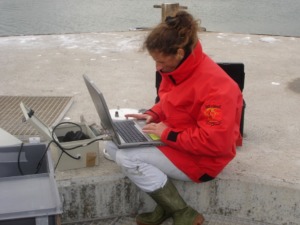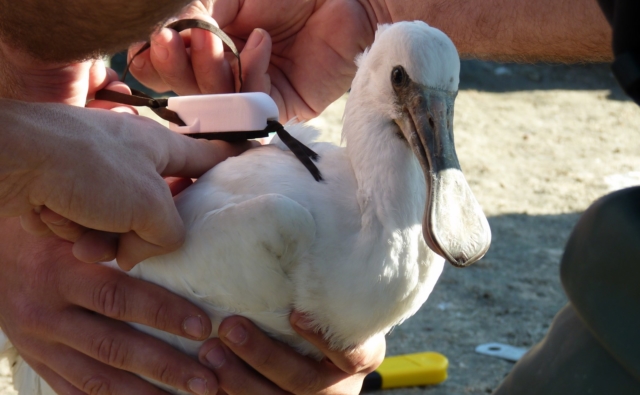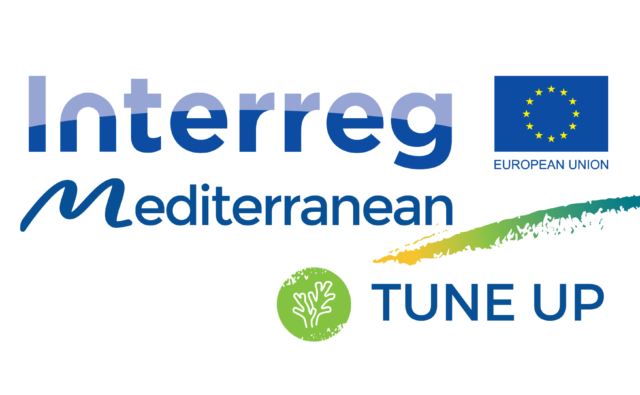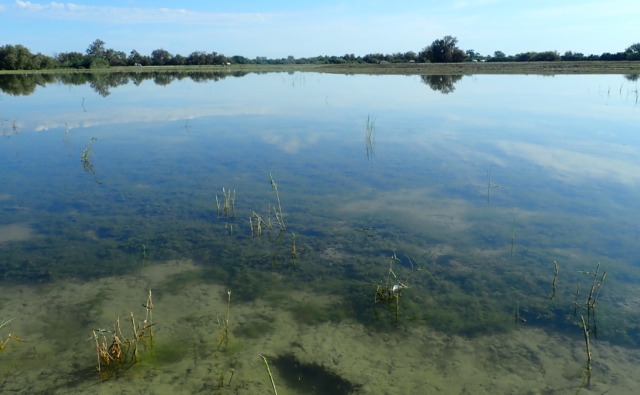 Annie Fiandrino, researcher at Ifremer (Mediterranean Centre, La Seyne-sur-Mer), UMR MARBEC, “Modelling / Coastal environments” Coordinator of the Oceanography and Ecosystem Dynamics Department and the Scientific Division answers questions from the Tour du Valat concerning “Using numerical modelling to support wetland restoration and management programmes”.
Annie Fiandrino, researcher at Ifremer (Mediterranean Centre, La Seyne-sur-Mer), UMR MARBEC, “Modelling / Coastal environments” Coordinator of the Oceanography and Ecosystem Dynamics Department and the Scientific Division answers questions from the Tour du Valat concerning “Using numerical modelling to support wetland restoration and management programmes”.
- Why and how did you come to use modelling for your research on lagoons?
I joined Ifremer in Sète in 2001 to develop modelling on the team that observes and tries to understand the functioning of lagoon ecosystems. From the time I arrived until the end of my mission in 2014, I was greatly involved in the Lagoon Monitoring Network (RSL). The aims of this regional network[1] were to: i) monitor and assess changes in the eutrophication status of lagoons and provide management bodies with diagnostic reports; ii) provide management support tools that can help identify the pertinent levers that can be used and to achieve the ecological quality targets set by the Water Framework Directive.
I progressively became aware of the value of these specific tools, particularly in terms of sharing knowledge between the various parties involved in ecosystem management, and of the constraints involved in designing such tools. If we want management tools to be useful, usable, and used, they must provide reliable answers to the questions being posed by society within timeframes that are compatible with decision-making. As these two constraints are by their very nature contradictory, I have come to the conviction that a good compromise between accurate and reliable tools and response times involves finding the right scales for applying knowledge.
For the restoration of eutrophicated lagoon environments, the biogeochemical processes involved take place over a medium to long period of time (several years), and the spatial scale is the entire lagoon ecosystem. The GAMELag model proposed to address this issue is based on a representation of the ecosystem as “physical boxes” and “biological compartments,” and focuses on describing the flow of matter between these different components. By opting for a box model instead of a high spatial resolution model, the approach adopted was deliberately pragmatic. In addition, we have adopted an approach based on continuously improving the tool, through a simple conceptualization of the ecosystem and complexifying our approach as needed, in relation to the tool’s limitations.
- Could you give us a concrete example of a successful modelling approach that has helped manage lagoons?
The significant anthropogenic pressures the Or lagoon has been facing for several decades have made it one of the most highly degraded lagoons on the French Mediterranean coast. Numerous ecological engineering projects aimed at reducing nutrient inputs have been developed since the early 2000s under environmental contracts managed by the Syndicat Mixte du Bassin de l’Or (Symbo-federation for the protection and management of the Or Basin). In 2017, the lack of restoration activities prompted Symbo to launch a study aimed at i) quantifying the nutrient flows entering this lagoon, ii) gaining a better understanding of its hydrodynamic and ecological functioning, and iii) assessing the Permitted Nutrient Flows for this lagoon.[2]
The GAMELag model was adapted and applied to the Or Lagoon as part of this study, and a major effort was made by Symbo to acquire specific data (stressors and to validate the tool). After the tool was validated, the model was used to simulate how hydrobiological parameters in the lagoon would respond to different nitrogen and phosphorus input scenarios. The analysis of these scenarios led to the creation of a chart that establishes links between the exogenous and endogenous pressures facing the lagoon and its ecological functioning. By providing information on the links between the “Pressures/Stressors” and the “State” of the ecosystem, this chart helps managers to define effective levers of action.
This modelling work has also revealed the key role played by the sedimentary compartment (as an internal source of nutrients) in the ecological restoration of the Or Lagoon. As a result, along with the ecological engineering projects that will be carried out in the coming years to reduce exogenous inputs, changes in sedimentary stocks should be monitored. In addition to WFD monitoring, these data on sediment stocks will help to position the lagoon in the chart in terms of internal pressure.
- What led you to this approach of transferring knowledge to managers and how do you adapt your modelling results to this type of objective or target?
This tool is the fruit of our long-term collaborative efforts of over ten years with the Rhone-Mediterranean and Corsica Water Agency and lagoon managers. In addition to the scientific and technical advances made on the tool itself, its application to various Mediterranean lagoons, and the Or Lagoon in particular, has confirmed that it can be transposed and adapted to sites with complex ecological functioning. Its degree of maturity has made it the reference tool in the “Permitted Nutrient Flows for the lagoons of the Rhone-Mediterranean and Corsica basin” approach.
However, to successfully deploy the tool throughout the Rhone-Mediterranean and Corsica basin required scientific and technical expertise in lagoon hydrological systems (catchment areas and lagoons), the pooling of feedback, and close support for the management bodies involved in the “Permitted Flows” approach, from the drafting of specifications for studies to estimate catchment area flows, to the public presentation of the results, as well as the application of the GAMELag tool at each site and the analysis of the management scenarios developed jointly with the stakeholders.
Since 2021, the partnership between the Tour du Valat, the Water Agency, and Ifremer has made it possible to fulfil all of these conditions within the “mission to support the deployment of the Permitted Flows approach.” This mission is backed by the Tour du Valat, which now has human, scientific, technical, and financial resources dedicated to it.
In addition to this support mission, the Tour du Valat’s inclusion in the “GAMELag community” will enable the tool to be further improved and its range of application to be extended to oligohaline and mesohaline water bodies.
[1] The Lagoon Monitoring Network was set up in 2000 as part of a technical and financial partnership between the Languedoc-Roussillon Region, the Rhone Mediterranean & Corsica Water Agency and Ifremer.
[2] The Permitted Flow corresponds to the maximum pollutant load from the catchment area that does jeopardise compliance with the quality objective” (From Disposition 5A-02 of fundamental guideline 5 of the SDAGE 2022-2027 for the Rhone-Mediterranean Basin).



